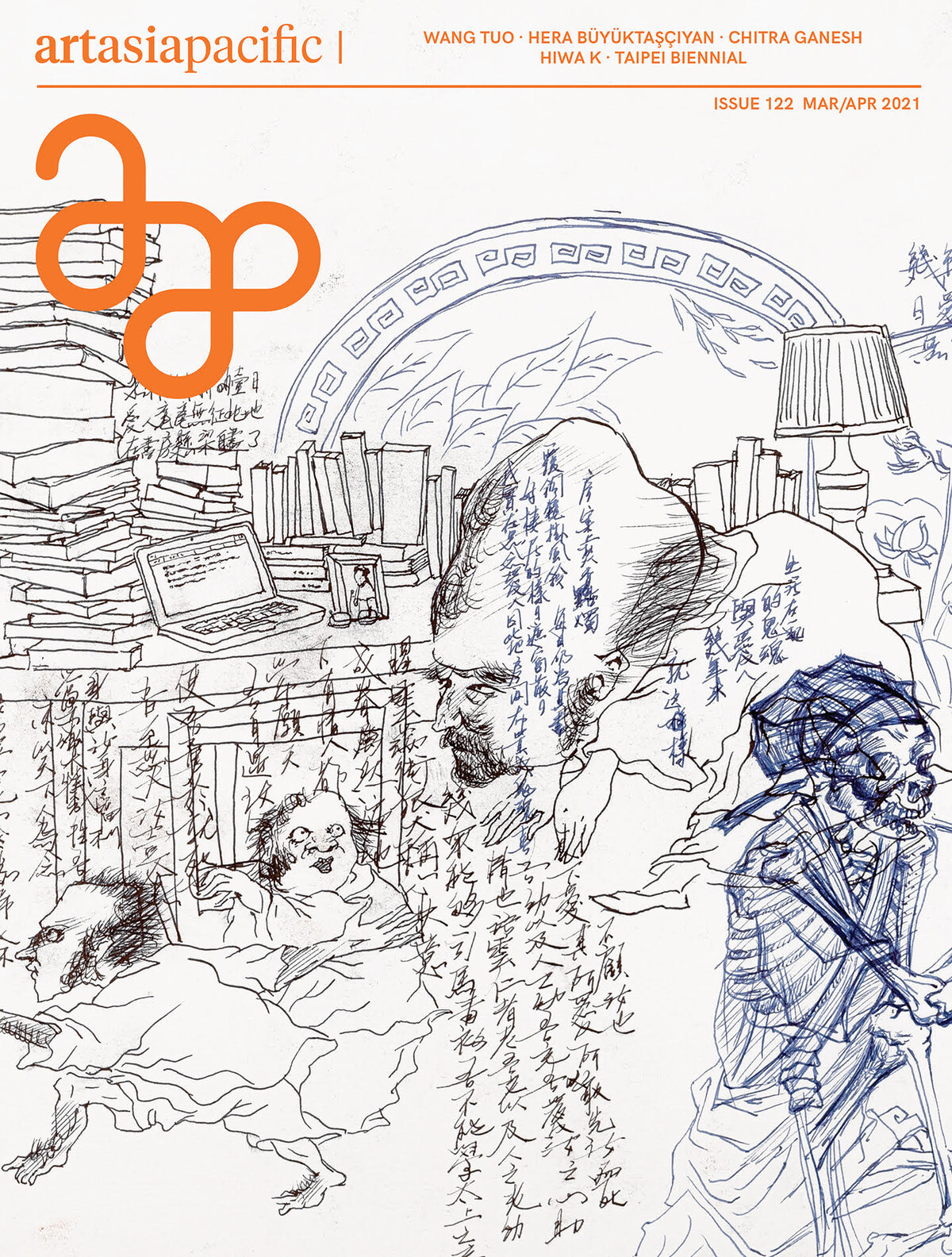It feels like it was both a century ago and just yesterday when news of a mysterious coronavirus first started to spread across the globe. In warping our experiences of time, the pandemic has drawn attention to the unstable nature of how we relate past with present.
In ArtAsiaPacific’s March/April 2021 issue, we spotlight two artists whose conceptions of time reveal the messy entanglements between historic and contemporary realms. For our cover Feature, associate editor Ophelia Lai examines the practice of Beijing-based Wang Tuo, whose films often present parallel realities. More recently, Wang has become interested in shamanism as a model for accessing multidimensional views of time and place, seen in his recent film tetralogy on the history of Northeast China.
Istanbul-based Hera Büyüktaşçıyan, the subject of our second Feature, by deputy editor HG Masters, adopts a similarly expansive perspective of historical time. Looking closely at the architectural structures of cities that have experienced seismic changes in populations, Büyüktaşçıyan traces nearly forgotten tales through her sculptures, installations, videos, and drawings. The works build on the artist’s notion of “aquamorphology,” which, she explains, is “about the ‘fluid, aquatic nature of memory’ that ‘can simultaneously purify, divide, connect, heal, and destroy.’”
For Up Close, AAP’s editors highlight recent productions, including Lu Yang’s video-performance Delusional World (2020), featuring a dancer whose movements controlled virtual characters navigating animated hellscapes. We also examine Cian Dayrit’s design for a sail advocating for the rights of fisherfolk in the Manila Bay, and Yang Fudong’s meditative, multimedia series Endless Peaks (2020), displayed at his 2020–21 solo exhibition at ShanghArt Gallery in Shanghai. Rounding out the Features, Inside Burger Collection delineates the work of photographer Paul Hutchinson through an essay and artist interview, by curators June Drevet and Sylvia Metz, respectively.
In Essays, writer and curator Godfre Leung brings into conversation two exhibitions that were recently presented in Vancouver: “Third Realm,” which highlighted decolonization and heterogeneity as two important features of postwar Asia; and “Soundings: An Exhibition in Five Parts,” an inquiry into how musical scores can be used for decolonization. Leung asks whether “a productive dialogue can be held between Asian art in its worldstage moment and Indigenous artists, who, while in a moment of unprecedented visibility, are still living under active colonization.”
The Profiles section features Iraqi-Kurdish artist Hiwa K, who tells contributor Frances Arnold about his move back to Kurdistan after two decades of living in Germany, and his new, ecologically focused projects rooted in his homeland. Seoul desk editor Andy St. Louis discusses multimedia artist Min Oh’s deconstructions of performance tropes, and managing editor Chloe Chu traces Taipei-based Au Sow Yee’s film series, which locate the imprints of Cold War ideologies on visual culture.
Elsewhere in the issue, the Seoul-based collective Listen to the City pen an article for The Point about the impact of Covid-19 on people with disabilities and how we might reconceive urban communities to create more resilient post-pandemic cities. In Dispatch, we hear from Ana Vukadin in Rome about how the local arts community is devising strategies not only to survive but to thrive, despite an infrastructure that was crumbling long before the pandemic hit. For One on One, artist Wong Kit Yi pays tribute to dealer and writer Michael Findlay, whose time-hopping art historical accounts have inspired Wong’s projects, the most recent of which includes a “a jet-lag-inducing patch.”
Lastly, for Where I Work, New York desk editor Mimi Wong visited the Brooklyn studio of Chitra Ganesh, whose paintings, drawings, and videos collide age-old mythologies with futurist motifs such as faraway planets and nebulae. As the works of Ganesh, Wang, and Büyüktaşçıyan show, the past inevitably influences the present, but in each moment of encounter, there is also the potential to break from established histories and imagine the world anew.
A digital edition of the full AAP 122 Mar/Apr issue is now available for purchase on Zinio, Google Play, iTunes, and Magzter.

